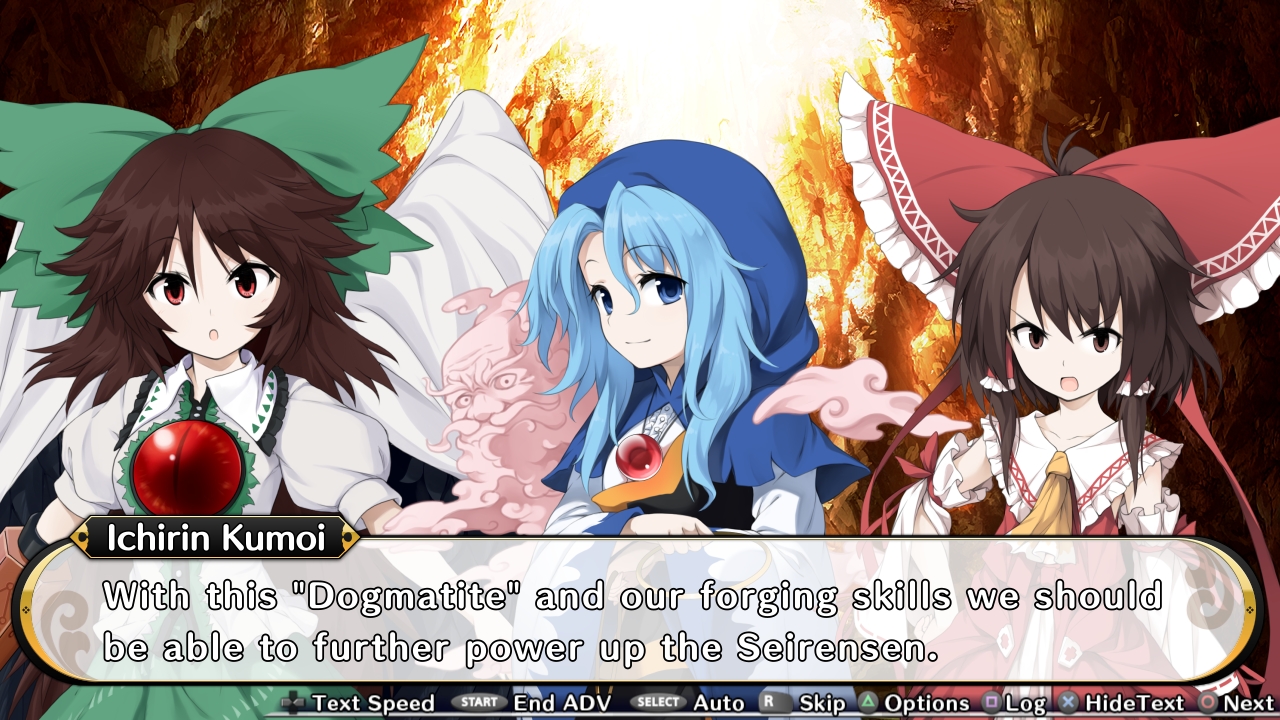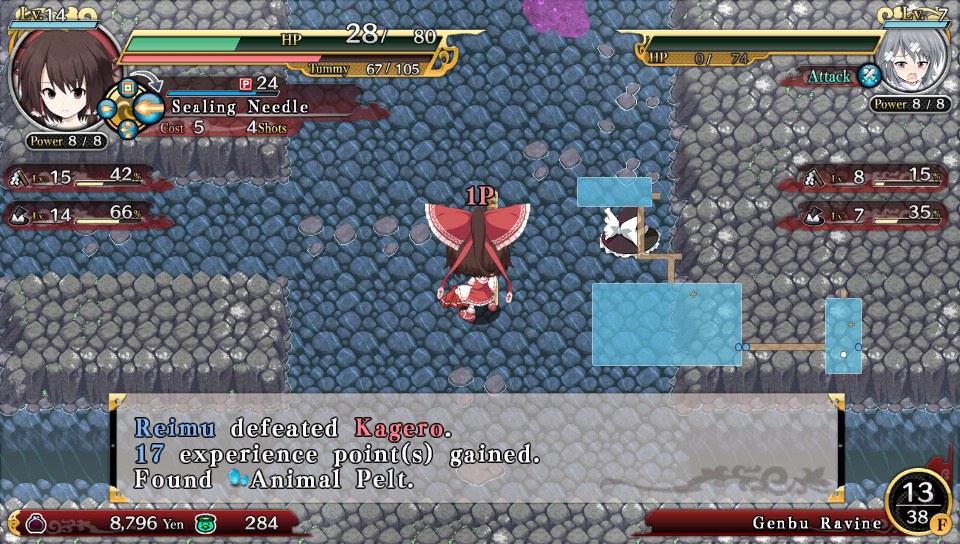Platform:
PS4
Released:
April 10, 2017
Publishers:
NIS America, Mediascape
Developer:
Aqua Style
When Touhou Genso Wanderer was handed to me to review I’ll admit I had to do a bit of homework to see what I kind of game I was in for. It turned out that Genso Wanderer was a mystery dungeon explorer – talk about a dying genre! Having only played Pokémon Mystery Dungeon as reference to this niche gameplay style, this was going to be an experience for me. Good or bad, I was certainly up to the challenge.

Touhou Genso Wanderer starts with the introduction on Reimu, a young shrine maiden who is the company of antique shop owner and long-time business associate Rinnosuke. Trapped in the shrine due to a heavy downpour, Reimu finds herself with nothing to do until a golden orb that Rinnosuke is admiring begins to glow an eerie purple. Curiosity gets the better of Reimu, who tries to liberate the orb from Rinnosuke but ends up knocking it over instead. Distraught over this, Rinnosuke moves to pick it up but is enveloped in a burst of blinding white energy. When the dust settles, it becomes apparent a change has taken over the kindly shop owner; he then attacks Reimu and she is forced to flee and ends up in a mysterious dungeon.
“…it’s all a matter of clever strategy and well-timed battle attacks.”
Throwing you right into the deep end, Reimu is forced to explore this dungeon and take on monsters to make her way back to her shrine. During her exploration she happens across a young Shikaisen and Sage in training, Futo. After a brief introduction they team up and explore the remaining floors of the dungeon and make their way back to the shrine, only to find that Rinnosuke is no longer there. This is where Genso Wanderer’s story begins.
Gameplay is simple enough when it comes to any kind of dungeon explorer: explore and seek out the next floor while defeating any monsters in your path and avoid any traps that may await you. Genso Wanderer doesn’t stray too far from this simple formula and conversely doesn’t make it easy for beginner players, like myself, who may be unfamiliar with the intricacies of the genre. Players who want a more in-depth rundown of how the game can be played properly should make use of the training dojo mentioned early on in the game – it will save you hours of frustration and will put you on the front-foot for what’s to come.

Once players have a general understanding of how Genso Wanderer is played, it’s all a matter of clever strategy and well-timed battle attacks. Think of it as a digital game of chess, when you move, your enemy does, and you’ll need to make sure you have your next few moves through out. What makes exploring more challenging in Genso Wanderer is the way in which players are forced to overcome certain obstacles. To traverse over lakes, avoid overpowered opponents, and reach your goal in minimal time you will need to make use of the countless items you find in the dungeon, whether it is a spell tag, loose change, or willingly step on a specific booby-trap – this game requires foresight and critical thinking.

Battle is an enjoyable experience; Reimu is the main controllable character, but early on in the game you’ll be able to passively control a secondary explorer partner. Weapons and armour can be found in dungeons and levelled up as you use them to defeat enemies. Attacking can be done with either your chosen weapon, magic seals that deal varying degrees of damage, or danmaku projectiles – a kind of inner energy that Reimu can manifest to hurl at enemies. All three battle tactics have their pros and cons and it’s up to the player to determine which is best used at the time; you’ll learn quickly that making the wrong choice can cost you severely.
One of the more interesting Genso Wanderer game mechanics it employs one is the Nito Fusion item creator, which greatly appeases the alchemist in me. During your exploration you’ll come across an abundance of items that you necessarily may never use or just don’t possess the capacity to carry. Nito Fusion allows a player to level up weapons and amour by combining them to create much more powerful versions, as well as combine certain medicines and foods to create ability and stat buffs. Making the most of this game mechanic will certainly shorten your time within dungeons and grant you an advantage over your enemies.
Genso Wanderer does a lot to make this game as engaging as possible to new players, and fans of the Mystery Dungeon Explorer genre, but there are few problems that stop this from being an exceptional experience. It was apparent within the first few hours that the game was very dialogue heavy. The level of exposition was bordering on interactive novel and despite my love for classic anime tropes, I found myself zoning out during interactions because of how many of them droned on – a simple trip to the item store took almost half an hour of talking. The auto play option for skits is heavily recommended. The other issue I had with Genso Wanderer is that this is a series that has an extensive lore and history and I was coming in blind. There were references to past events, characters, and creatures that I had no knowledge of. I felt like I was intruding on a world that I had no claim to.
Positive:
- Innovative gameplay mechanics
- Colourful cast and interactions
- Challenging and engaging dungeons
Negative:
- Drawn out dialogue-heavy scenes
- Prior knowlege of game's lore helpful
A departure from the usual games I’d seek out personally, the creative story and colourful characters keeps things engaging enough to have me playing it all the way to the finish. Overall, Touhou Genso Wanderer is a fun-filled dungeon explorer that does its best to make an ever dwindling genre relevant again, and is a game I recommend to those who are looking for new gaming distraction.














